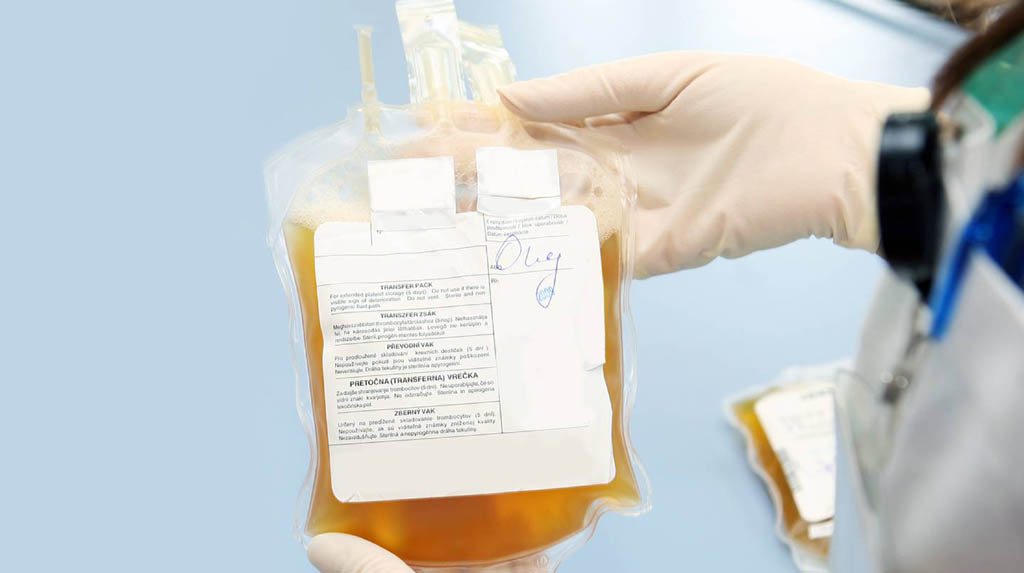New Delhi: With COVID-19 rapidly spreading across the country, the discovery of a vaccine is the only escape from the pandemic. Health warriors have explored the convalescent plasma therapy as a preventive measure to fight the novel coronavirus.
The therapy aims at using antibodies from the blood of a recovered COVID-19 patient to treat those critically infected by the virus. The process of taking plasma from the donor is not as complicated as it sounds, one of the plasma donors from Ahmedabad, Gujarat, told IANS.
23-year-old Smruti Thakkar shared her experience of donating plasma for the treatment of novel coronavirus.
“I received a phone call from the hospital, requesting to donate my plasma for the treatment of COVID 19 patients, which I happily agreed to, and donated. It took just 99 minutes to donate the plasma,” Thakkar told IANS.
Thakkar, who is doing her Masters in luxury brand management in Paris, came back to India on March 19. She had cough and a sore throat. Later, on March 21 she was hospitalised for 17 days as she had tested positive for the coronavirus.
“I was discharged on April 6, after I recovered and responded well to the treatment. I was kept under home quarantine for another 14 days. On Day 15, the hospital authorities called me up and said that they got permission from the government for plasma therapy. so, they requested me to donate my plasma,” she said.
“The doctors explained the whole procedure how they collect the plasma and for what reason. They said it is like blood donation. The plasma will be separated from the blood and the remaining blood will be transferred back to your body. So there is no blood loss, only plasma will be taken from the blood. They took 400 ml plasma from my body,” Thakkar explained.
Elaborating on this, she said the procedure was simple. “When I came to the hospital , a blood test and body check-up was done. Then they started the procedure. It took just 99 minutes for the entire procedure. During the process. I was given vitamins, food and water. The procedure was completely smooth. I did not feel any pain, sickness or dizziness.
“The doctors told me that my haemoglobin was very good – 15.5 – which is rare. They said that I am an AB positive group. Plasma of this group suits everyone.”
The plasma therapy is still in a study trial phase but has yielded good results on critical patients in India as well as abroad.
Sangeeta Pathak, Senior Consultant and Head of the Blood Bank, Max Super Speciality Hospital, Saket told IANS that the process is in the trial phase with regard to COVID-19 treatment. However, the therapy is not new and has been used in the past for treating diseases like Ebola and SARS.
“We collect plasma from the patients who have recovered from a particular disease, in this case, from COVID-19. The donor should test negative for the virus twice, at least at an interval of 24 hours.
“These two tests have to be negative from the 14th day of the last negative test for coronavirus, or in 24 hours from a patient’s test, who has read negative on the 28th day. In 28 days category only 1 test has to be negative because by that time the patient is fully recovered. The therapy was used in Ebola virus and SARS virus disease earlier. This therapy was under trial during that time also but because these diseases were not rampant like COVID-19 pandemic therefore the therapy did not come out in a big manner that time,” Pathak said.
There are various challenges, however, to meet in order to process plasma therapy.
According to Pathak one of the most challenging things is to identify the donor.
“The biggest challenge in this therapy is identifying the donor. It is difficult to convince the donor for plasma donation because there is a big stigma attached to this disease” she said.
The hospitals have to constantly follow up with the people who have recovered from COVID-19 for identifying the donors.
“Another challenge is that it is a group specific treatment, if suppose it is required for a B group patient, we need to find a B group donor that is also a challenge. However a compatible group can be given for example AB group plasma can be given to anyone and it is the safest plasma. Motivating people for donation is the key to this,” said Pathak.
Talking about the side effects of the convalescent plasma therapy, Pathak said the side effects of this therapy are rare, however in COVID-19 cases they are yet to be studied.
“There are rarely any side effects of this therapy like allergic reactions but in very few cases. Then there is transfusion-related acute lung injury (TRALI) which is another very rare side effect of this therapy. At least I have not seen any case of TRALI, except maybe one or two, in my 22 years career in transfusion. The side effects of this therapy are negligible as compared to the benefits that this therapy gives to the patients. It is a very cost effective therapy,” said Pathak.




